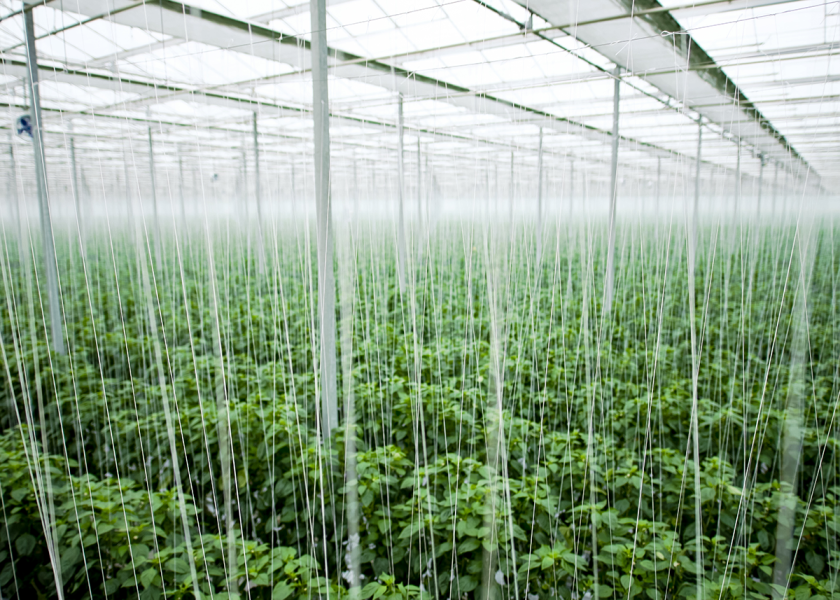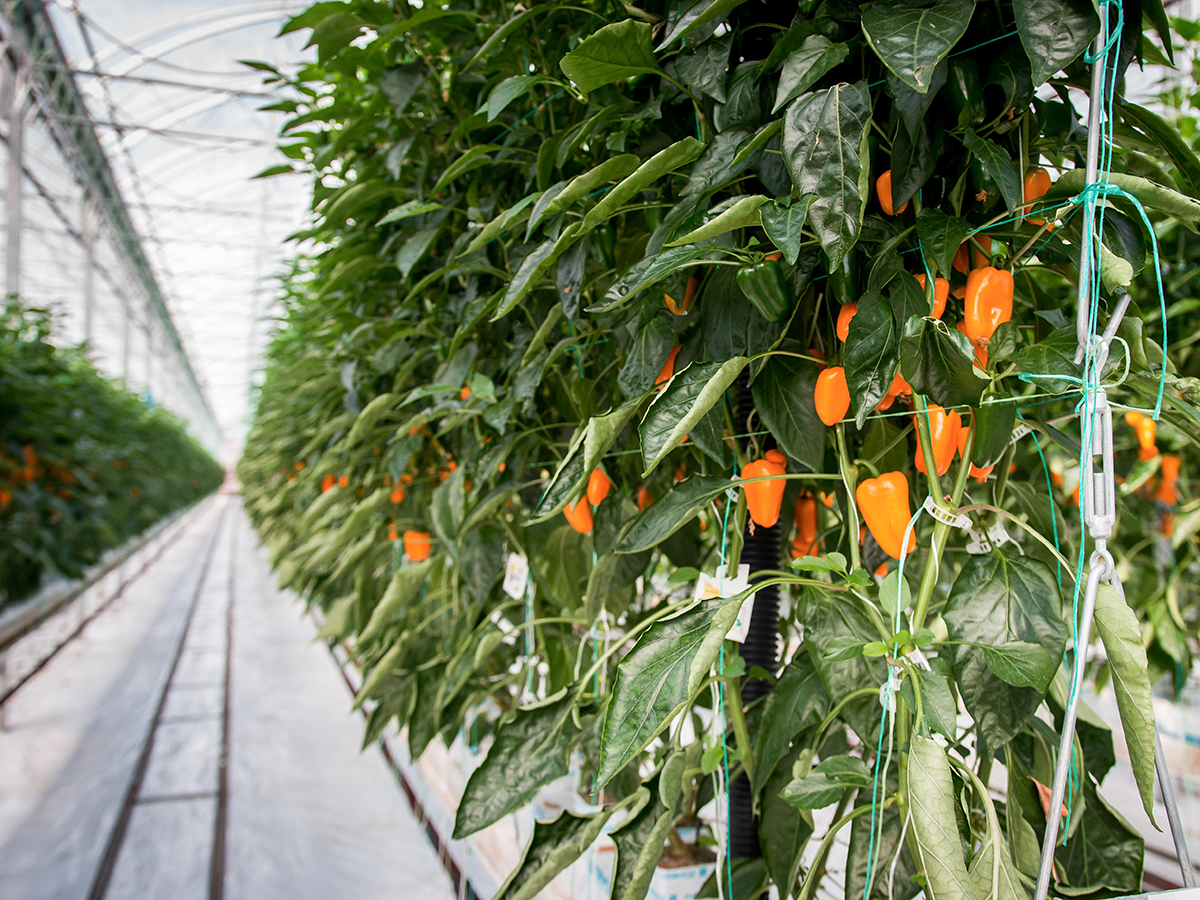Ontario greenhouse industry faces challenges amid growth potential

Greenhouse production in the province of Ontario is going strong, Ontario Greenhouse Vegetable Growers Executive Director Richard Lee recently told The Packer.
Currently, 170 growers farm about 3,962 acres in the province, and while they experienced a steady 6% annual growth from 2011 to 2021, there has been a slight pause the past two years, Lee said. He estimated that Ontario greenhouse growers contributed about $6 billion to the province’s economy during those 10 years of growth.
Ray Mastronardi, vice president of sales at Kingsville, Ontario-based Del Fresco Produce, said that volatility has hit in different ways over the past few years.
“We’ve experienced dips in the market, resulting in high product volume in the sector, causing lower-price items,” he said. “Cold snaps in places like Florida and Mexico have caused high volatility at the end of last year, which caused a massive shortage in product, and demand in product was high.”
Dino DiLaudo, vice president of sales and marketing for Leamington-based TopLine Farms, said there have been many changes in the Ontario greenhouse industry.
“Many growers across the region have expanded their operations to meet the increasing demand for fresh produce,” he said. “There has also been a lot of consolidation, with larger players acquiring smaller companies.”
But for TopLine, DiLaudo said, additional LED lighting in greenhouses helped bolster output for conventional and organic tomatoes, peppers and cucumbers.
“In 2024, we are continuing our expansion efforts, leading to a 25% increase in output among our top three commodities,” he said.
Lee said the greenhouse vegetable industry currently represents about $1.4 billion in farm gate sales and $1.32 billion in export value. Growers rely on the export market for the more than 1.1 billion pounds of produce the province produces yearly, he said, adding that marketing is a big component of the Ontario Greenhouse Vegetable Growers’ focus.
“Three hundred trailer tractors of produce are leaving our farms daily,” he said. “And two-thirds of those trucks are going to the [U.S.] We’re focused on the Eastern Seaboard, but we’re seeing some penetration to the west now into other states. We’re engaged in some marketing activities to heighten the profile and benefits of greenhouse vegetables in those states.”

Current state
Greenhouse-grown lettuce also continues to rise in the province, as does vertical farming, which Lee said is a perfect fit in the northern part of the province where it’s challenging to ship fresh produce.
DiLaudo, Lee, Mastronardi and Harold Paivarinta, senior director of sales for Kingsville-based Red Sun Farms, all say shoppers’ desire for snacking vegetables continues to drive demand for Ontario-grown greenhouse vegetables. Mastronardi said convenience packaging also continues to be popular.
“Customers like the convenience of pre-packed vegetables, and it allows them to figure out cost value by purchasing them in that format,” he said. “The snacking category, including pre-packed fruits and vegetables, will grow … convenience is key.”
Paivarinta said his company sees consumer preferences changing with inflation. Mastronardi said as more of Generation Z enters the workforce, those consumers will be more selective about purchasing decisions.
“They are also the first generation to be raised in a digital world where influential marketing plays a large role in how they buy,” he said. “We as an industry have to pivot the way we market to reach our audiences. They also want to make a difference in their communities and their environments.”
Part of making a difference includes sustainability, which is another focus for retailers, suppliers and consumers, DiLaudo said.
Future of greenhouse growing
Lee said Ontario Greenhouse Vegetable Growers recently completed a growth and sustainability study commissioned by independent research firm AIRM Consulting. He said the association sees potential for the industry in the province to grow at about 5% annually for the next 10 years.
The Ontario greenhouse industry could experience more consolidation, DiLaudo said.
“Established players will continue to acquire smaller growers to fast-track expansion and increase supply,” he said. “Anticipate continued expansion as demand for locally sourced and sustainable produce rises.”
DiLaudo said he also sees more growers adding new crops grown in controlled environments to meet consumer preferences.
While Lee said the association’s projected annual growth is lower than the past 12 years or so, he said it factored in some of the challenges currently facing the industry, including a lack of infrastructure.
“We’re bursting at the seams ... ,” he said. “Sometimes with that hypergrowth, it takes some time to absorb some of that growth into the markets.”
Lee said growers face obstacles with access to natural gas, water, sewer systems and storm sewers. Another issue for growers is a carbon tax intended to incentivize a transition to greener forms of energy.
“It costs an average farm currently about $4,800 an acre due to the carbon tax,” he said. “[That] $4,800 an acre equates to approximately $19 million that’s directly billed back to the farmer, which increases your cost of production, threatens your future viability of farming in Ontario and the affordability of fresh, nutritious produce.”
Lee said the carbon tax rate will rise from now until 2030, ultimately costing the average Canadian grower $48,000 an acre.
Other headwinds the Ontario Greenhouse Vegetable Growers will monitor include the ripple effect of British Columbia’s ban on single-use plastics. Lee said plastics play a major role in the province’s greenhouse vegetable industry, as exports need packaging that helps extend the shelf life of fresh produce.
Lee said that while greenhouse growers seek to limit plastic use when feasible, significant changes will take time and likely add to the cost of farming. He said this is why advocacy and education of lawmakers is part of Ontario Greenhouse Vegetable Growers’ message. He said while there hasn’t been much progress, the association will continue to push for achievable timelines, realistic goals and an investment in the future of protected agriculture in the province.
“We know that we need to invest in how we produce in a protected ag situation. The future of farming is protected ag,” Lee said. “We yield 15 times more per square meter than conventional farming. … We need those investments into farming in Canada. We need to prioritize friendly policies to support agriculture, and we need to incentivize as opposed to penalize to remain competitive and viable.”







